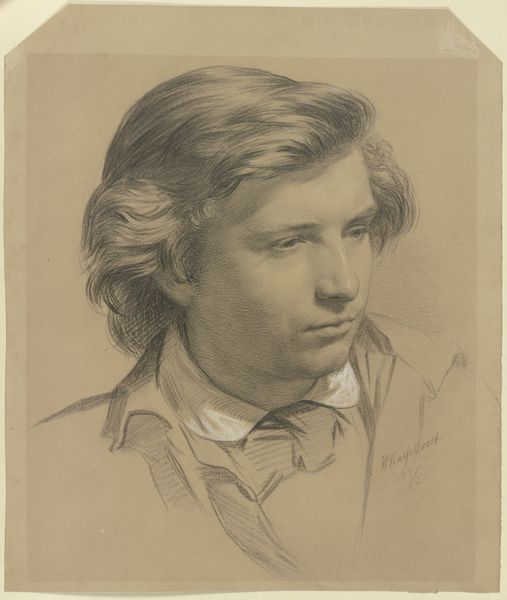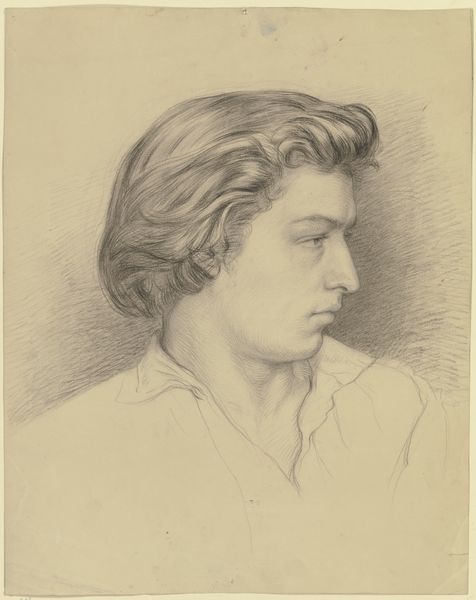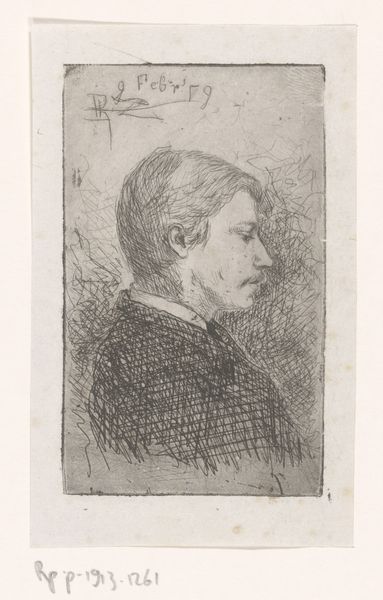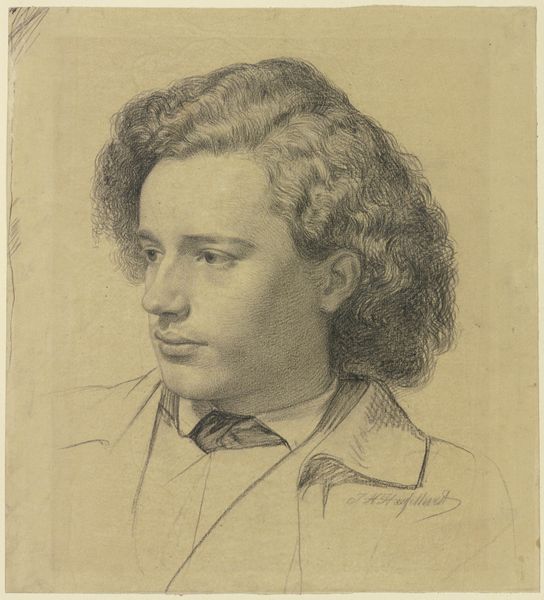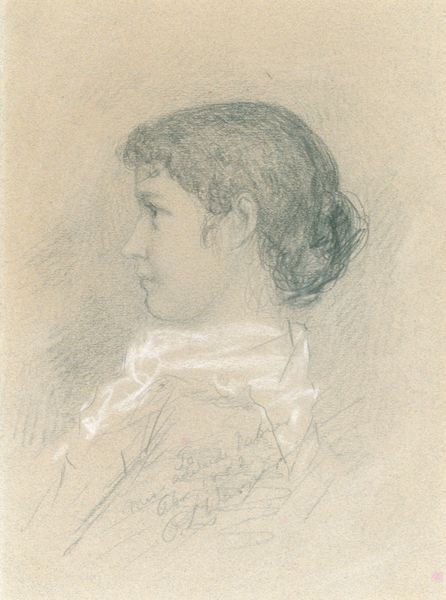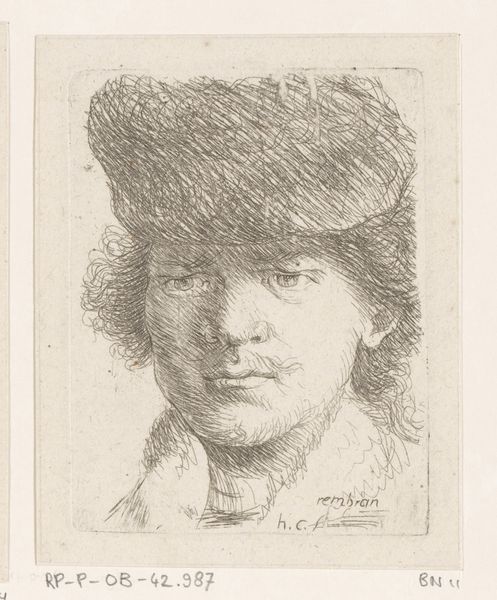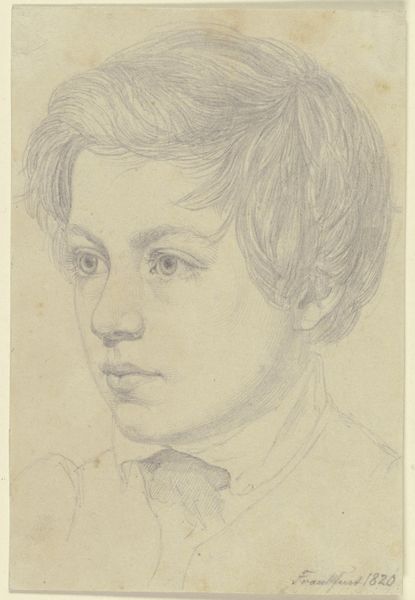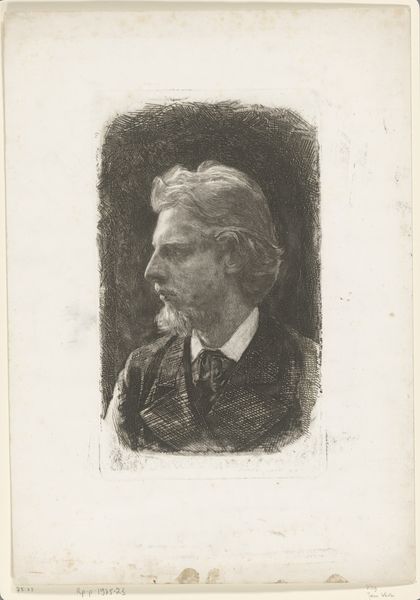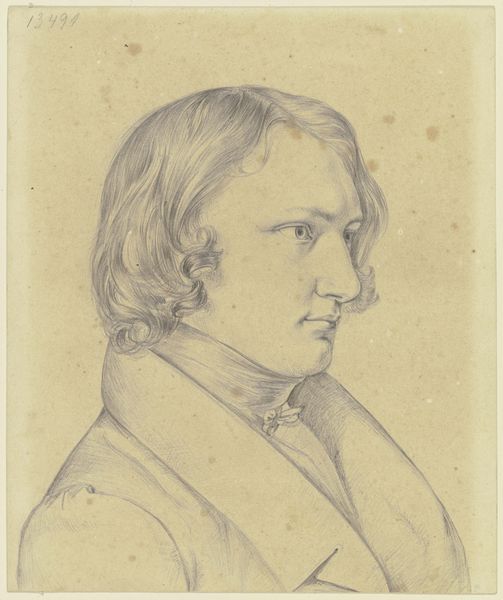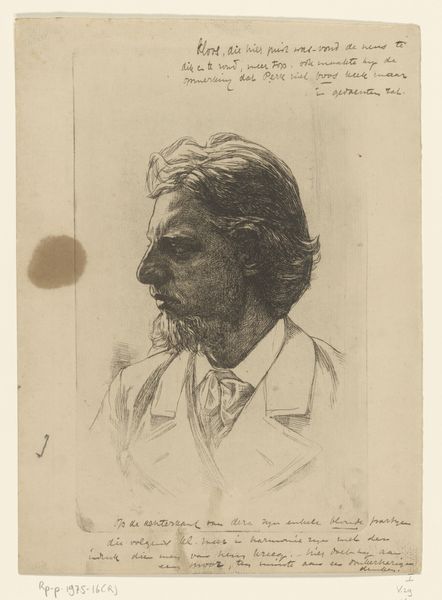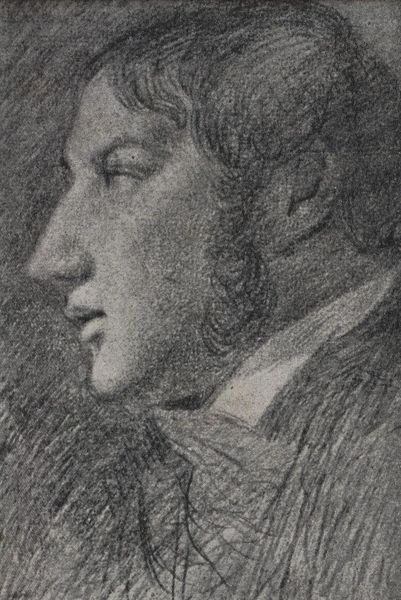
Bildnis des Malers Julius Hamel als Schüler des Städelschen Institutes im Profil nach rechts c. 1852
0:00
0:00
Copyright: Public Domain
Curator: Before us is a drawing from around 1852: "Bildnis des Malers Julius Hamel als Schuler des Städelschen Institutes im Profil nach rechts" which translates to "Portrait of the Painter Julius Hamel as a Student of the Städelsche Institute in Profile to the Right". Editor: The subtle shading gives the whole piece such a gentle, almost melancholy feeling. It’s a striking contrast of delicate details against a more roughly rendered background. Curator: Indeed. What’s fascinating is the tension between the artistic training Hamel received at the Städelsche Institute and the political context of mid-19th-century Germany, still grappling with the aftermath of the 1848 revolutions. Were these portraits also about affirming social identities or even a way to express certain allegiances through representation? Editor: It's compelling to consider the production of portraits, especially student portraits, as sites of labor. The choices of graphite, chalk, and charcoal—relatively inexpensive materials—suggest a focus on accessibility for aspiring artists. We're looking at the material underpinnings of artistic training. Curator: Absolutely. Think about the social position of someone like Julius Hamel within the Institute. His inclusion in this series reinforces the institution’s authority to bestow identity. Were those admitted given advantages based on gender, social standing, or family connections? What narratives were explicitly excluded? Editor: The economy of line also tells a story. Notice how certain areas, like the hair, are rendered with incredible detail, drawing our eye there first. It directs our attention and signifies where the value—both material and aesthetic—is concentrated within the artwork. Curator: Examining the artist's choices invites questions about access, exclusion, and the systems that elevate certain narratives while silencing others. The male gaze has been so normalized that portraits by, and of, men rarely provoke questioning or inquiry into the politics of looking, or issues around representation. Editor: In considering "Bildnis des Malers Julius Hamel", it feels like it’s reminding us that art historical context is as much about brushes, pencils, and paper as it is about broad sociopolitical issues of its time. Curator: Exactly, engaging in art is always interwoven into existing, complex narratives around race, gender, power, and more.
Comments
No comments
Be the first to comment and join the conversation on the ultimate creative platform.
